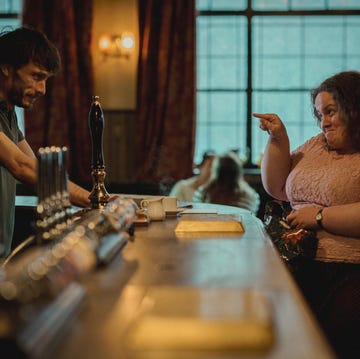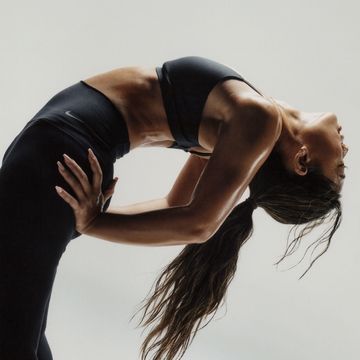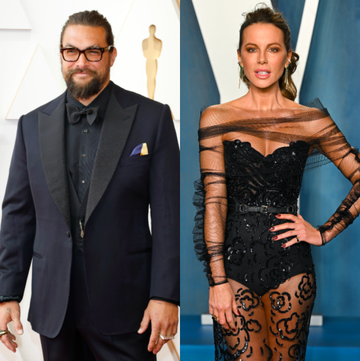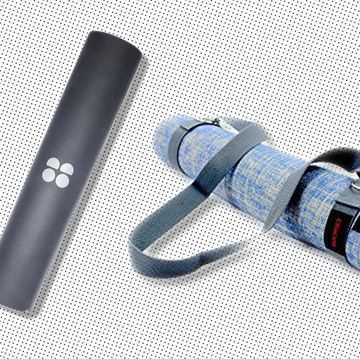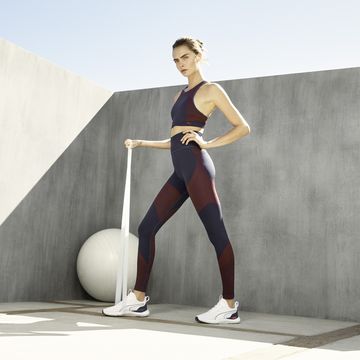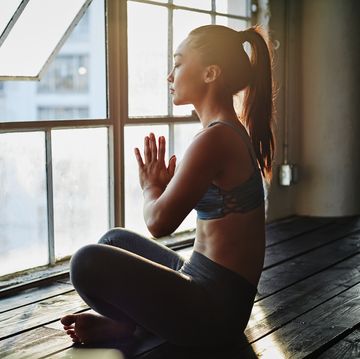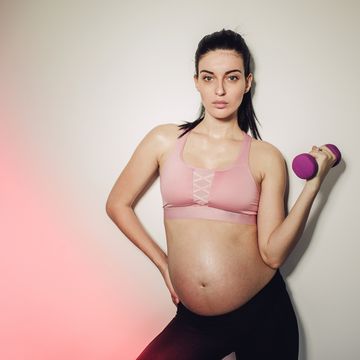Everyone remembers their first time: the first time they fell in love, the first time they held their newborn, the first time they swam in the tropical sea at sunset.
There is now one more first time I will never forget. Swimming in a lake. Not just pottering along, head up, looking at the wildlife (we’ve all done that as kids surely?). But actual front crawl swimming, leaves in your mouth, brown water sloshing all over the place and the shuddery feeling of cold water trickling into your ears.
This is the week that training for our first ever triathlon got serious. It’s only five weeks until our Leukaemia & Lymphoma Research Blenheim sprint triathlon. We’re not athletes, we’re not even what they call ‘recreational athletes’ – we’re working mums, young journalists and fashion stylists. We’re curious rather than competitive. The triathlon is a big adventure for us. But sooner or later we had to step out of our comfort zone (and the heated indoor pool) and into the open water. Boy, was it a shock!
My first session was with Swim For Tri in the Serpentine Lido in Hyde Park. I trained with a group of beginners under the watchful eye of Keeley Bullock, whose patience was impressive.
The previous Sunday I’d managed 15 lengths in a lido with a 60m stainless-steel bottom. It was 13 degrees but there were many wet-suited swimmers alongside me. That, it turns out, was a luxurious experience!
The Serpentine, not so much. The first time we set off to swim, I stood up in shock after a minute in the water. The cold, the lack of view, the mud: it was quite an assault on the senses. Also, where the hell was I going – I was swimming in a zigzag, highlighting my lack of proper front crawl technique.
A week later, I was in the ponds at Hampstead Heath with RGActive trainers Phil and Marsha who have devised our schedule.
While practising in the indoor pool is a must, outdoor swimming is an altogether different experience and I would advise anyone, however fit they are, to book some lessons outdoors. The normal rules of front crawl are slightly changed and it’s more about finding what suits you and getting used to feet and arms bumping you as you swim.
#ELLEfit four of the team in their Blueseventy open water suits at Hampstead Mixed ponds ready for an RGActive training session. From left: me, ELLE Head of Editorial Business Management Debbie Morgan, Hearst Magazines Commercial Content Director Vic White and ELLE Beauty's Natalie Lukaitis.
Here’s what I suggest for absolute beginners:
Clock up as much time outside as you can.
Learn how to fit the wetsuit properly – there is more to it than just putting it on.
Get some really good goggles.
Get used to standing on the soggy bottom of a muddy lakeside bank (it’s weird). Remember to enjoy it, it’s not a race, it’s supposed to be fun and the swim is over quickly for the sprint distance competitors.
All this swimming has highlighted something important for the #ELLEfit team: we need to eat more. Hurrah! Swimming burns more calories than running or cycling and if you’re new to cross-training, it’s worth taking a moment to work out what to eat to ensure you exercise efficiently. This week I hit the wall of fatigue – a simple run locally ended with me huffing and puffing up a mild hill so hard I had to stop and go home for a lie down. This hasn’t happened on my runs for a year so it was a surprise. Make sure rest days are rest days or you’ll hit the wall too.
1. This is the first bike I have had since I was 15. 2. Ready to go! First Barrecore session. 3. The ponds at Hampstead Heath, with a temperature of 15 degrees. 4. Wise words on the sign post at Hampstead Heath Ponds. But after the swim is another matter.
I turned to Jo Scott-Dalgleish, a registered nutritional therapist (www.nutritionsolutions4health.co.uk; www.endurancesportsnutritionist.co.uk) for some food tips. And this is what she told me:
How to get more energy for training
Increase the amount of starchy carbohydrate in your diet, by increasing portion sizes of foods like wholegrain or rye bread, pasta, rice, noodles, quinoa, potato or sweet potato from how much you normally eat. Regularly eat starchy vegetables like butternut squash and beetroot as well.
Dried fruit makes a good snack to increase energy levels. Mix with nuts to give yourself some protein and healthy fats as well. There are also energy bars available with dried fruits and nuts as their primary ingredients. Avoid cereal bars with added sugars from syrups.
Bananas are quick to eat and digest and contain more carbohydrate than other fruits, so they’re a good choice to eat around 30 minutes before a training session.
You may need to increase your calorie intake as your training hours increase. Try snacking on oatcakes and almond butter to provide some nutritious extra calories.
Before swimming
Knowing how soon you can eat before swimming is quite personal. Some people need to eat at least an hour beforehand, others can have a banana or a fruit yogurt only 15 minutes beforehand. I recommend not eating solid food less than 30 minutes before swimming to be on the safe side. If you haven’t had time to eat, it would be better to take an energy gel with some water or have 250ml of a sports drink or fruit juice diluted 50/50 with water (try red grape juice). This can work well with swim sessions before breakfast.
5. An outdoor shower. Anna Wintour would never be spotted here. 6. I have had to buy a PullBuoy to practise technique. It keeps your legs afloat. Am worried about the word 'elite' on this one. Feel it expects too much from me. 7. From left: Marsha El Hage – she has just told us about what people do in wetsuits to keep warm. We are not happy – ELLE Head of Editorial Business Management Debbie Morgan, me and Hearst Magazines Commercial Content Director Vic White.
Tips for race day
Eat a breakfast that is high in carbohydrate and low in fat, to give you energy and prevent digestive problems during your race. Porridge with banana and honey would work well. Do practise eating your chosen breakfast a couple of hours before a training session to make sure it works for you.
If there's a gap of more than two hours between breakfast and the start of your race (which is likely), I suggest eating an energy bar an hour beforehand as well, or taking a gel or drinking 250ml of sports drink in the 30 minutes before the race. You should also drink 500ml of water in the three hours before the race to make sure you are well hydrated at the start. If you are doing the sprint race, you should have a 500ml bottle of sports drink on your bike and aim to finish it during the bike leg in preparation for the run. Practise drinking this in training. If you are doing the shorter super sprint, carry a bottle of water to drink on your bike. You shouldn't need extra carbs for that distance if you have followed my other suggestions.
After the race, you should have some carbohydrate and protein within 30 minutes of finishing, as well as rehydrating. A bottle of chocolate milk or a specially formulated sports recovery drink works well here. Then eat a proper meal within two to three hours.

